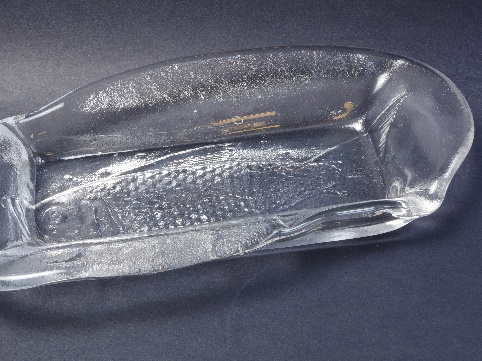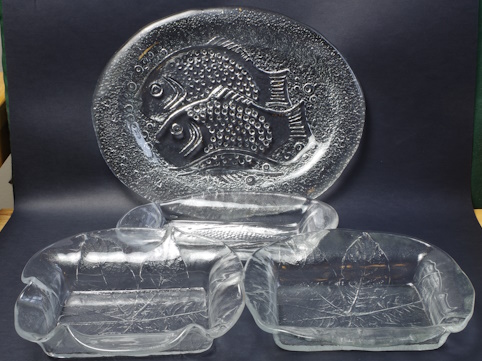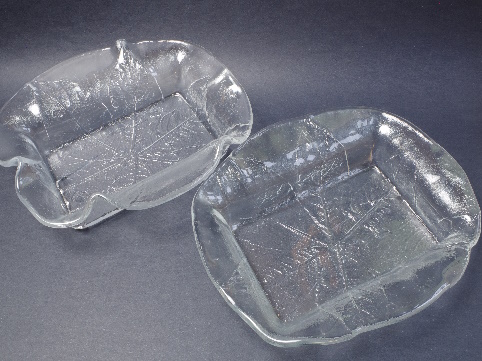On "baking pancakes"
During the 1960-ies a different method for glass pressing was developed. It became known as "baking pancakes".Göran Wärff is a name often mentioned in connexion with the method ( see article in Dagens Nyheter). Wärff was, at that time, working at Pukeberg, and brought the method to Kosta, where he started working in 1964.
The method works like this: a "blob" of hot glass is placed on a plan surface, often patterned. The "blob" is then lightly pressed, then, still red-hot and malleable, it is manually moved to a slumping mould where gravity helps giving it the final shape.
The film is a part of a circa 15 min promotional for OKB from 1997 (the whole film can be seen here), the less than minute-long part showing the "pancake baking":



